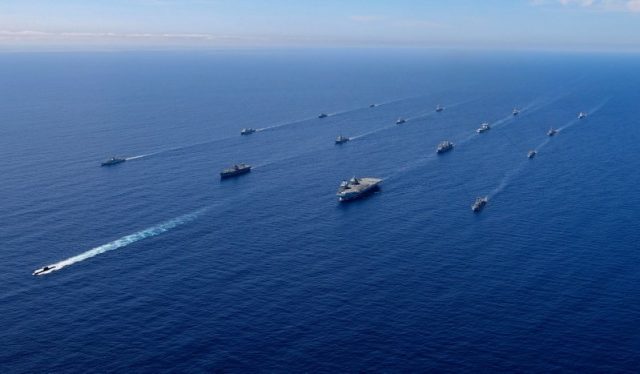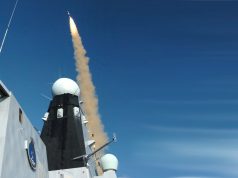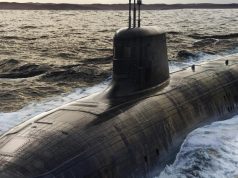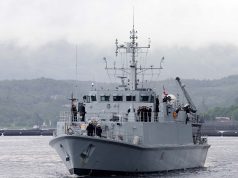The Royal Navy Type 45 air defense destroyer HMS Diamond is no longer underway with the UK Carrier Strike Group after being sidelined by undisclosed technical defects.
According to Navy Lookout, which was the first to report on the potential technical issues, HMS Diamond may have suffered a gas turbine engine failure and would have to stay in port until the turbine is replaced.
“HMS Diamond has experienced some technical issues and has detached from the task group for maintenance, inspection and any necessary repairs. She is expected to re-join the task group,” Navy Lookout quoted a Royal Navy spokesperson as saying.
This leaves the Royal Navy’s Carrier Strike Group (CSG) deployment, which is led by aircraft carrier HMS Queen Elizabeth, with a single UK destroyer – HMS Defender – providing air-defense for the group as it sails for the South China Sea as its ultimate destination.
HMS Defender is joined, however, by US destroyer USS The Sullivans and Dutch frigate HNLMS Evertsen, both capable air-defense platforms.
While the Royal Navy did not reveal why HMS Diamond did not transit the Suez Canal alongside the rest of the CSG, the service noted that the ship would be re-joining the deployment at a later point in time. If the reason for HMS Diamond’s stay in Augusta, Sicily, really turns out to be a defect gas turbine, the procedure to install a new one could take up to several weeks to complete.
Royal Navy’s Type 45 destroyers have a history of issues with the WR21 gas turbines, which repeatedly experienced problems delivering enough power to engines in warmer waters.
Work on rectifying these is currently underway on HMS Dauntless, which will be the first to undergo the Power Improvement Project (PIP). PIP will see the entire fleet of destroyers receive three new diesel generators, instead of the two currently fitted, to be able to better withstand operations in warmer waters. PIP builds on the work carried out in the first strand of the Project Napier from 2014, known as the Equipment Improvement Plan which addresses the reliability of existing equipment.
The UK CSG deployment began on May 22, and will see the task group sail to Japan and back over a span of seven-and-a-half-months.
The task group will visit 40 nations, including India, Japan, Republic of Korea and Singapore in a deployment covering 26,000 nautical miles.
The group will also join up and take part in exercises with French carrier FS Charles De Gaulle in the Mediterranean as well as navies and aircraft from allies such as the US, Canada, Denmark, Greece, Israel, Italy, Japan and the UAE.



























